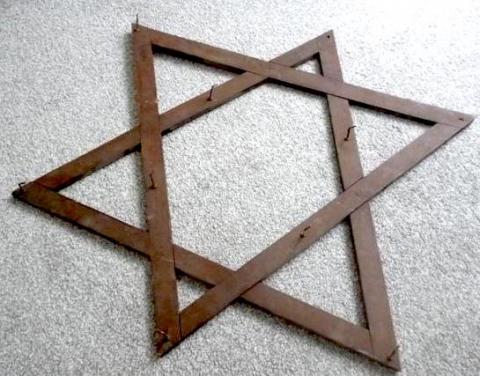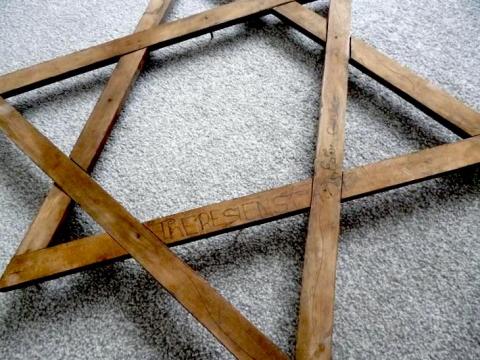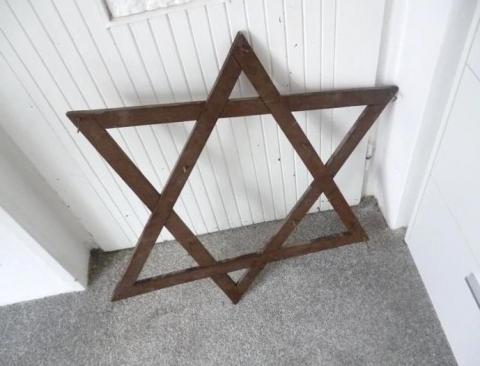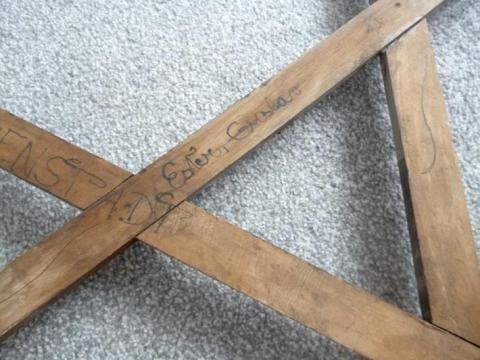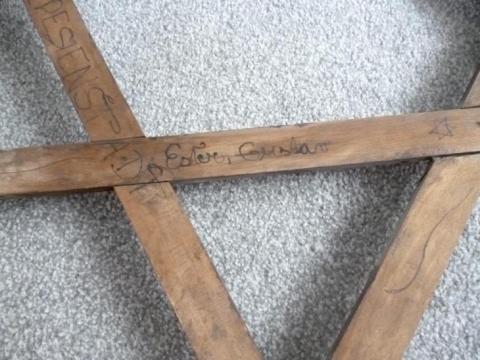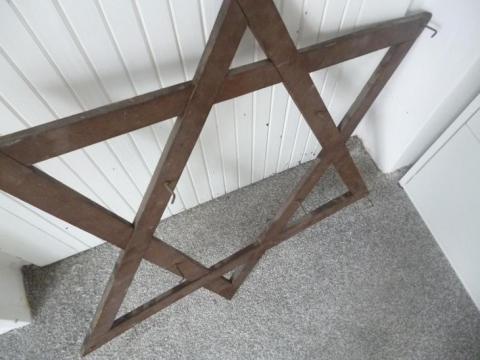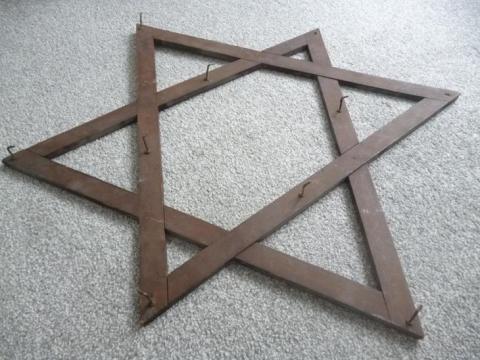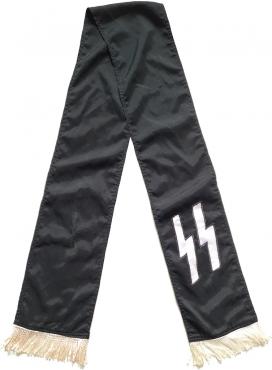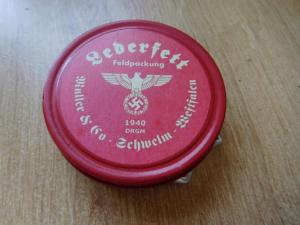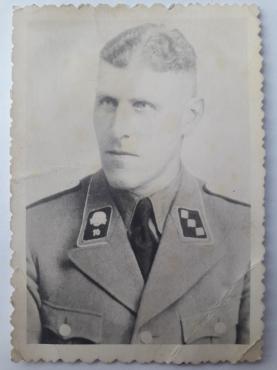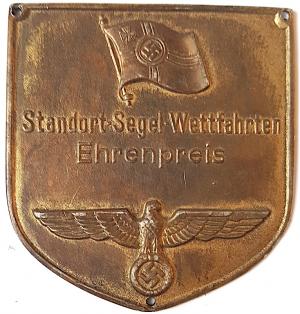TEREZIN CONCENTRATION CAMP - GHETTO LARGE WOOD JEWISH JEW STAR OF DAVID HANGER NAMED - MARKED
| List price(USD): | $650.00 |
| Price(USD): | $425.00 |
| You save(USD): | $225.00 |
TEREZIN CONCENTRATION CAMP - GHETTO LARGE WOOD JEWISH JEW STAR OF DAVID HANGER NAMED - MARKED
AMAZING PIECE OF HISTORY ! UNIQUE !
FROM THE CONCENTRATION CAMP OR THE GHETTO TEREZIN ( Theresienstadt ) WOODEN HANGER IN THE SHAPE OF A STAR OF DAVID
ON IT, A NAMED IS WRITTEN AS LONG AS THE NAME OF THE CAMP - GHETTO : Theresienstadt
OWNED BY A JEWISH FOR SURE DURING THE GHETTO TIME (BEFORE IT BECAME A CAMP).
VERY LARGE, SEE PHOTOS.
Theresienstadt (Czech: [ˈtɛrɛziːn] (About this soundlisten)) was a hybrid concentration camp and ghetto established by the SS during World War II in the fortress town Terezín, located in the Protectorate of Bohemia and Moravia (a German-occupied region of Czechoslovakia). Theresienstadt served two main purposes: it was simultaneously a waystation to the extermination camps, and a "retirement settlement" for elderly and prominent Jews to mislead their communities about the Final Solution. Its conditions were deliberately engineered to hasten the death of its prisoners, and the ghetto also served a propaganda role. Unlike other ghettos, the exploitation of forced labor was not economically significant.
The ghetto was established by the transportation of Czech Jews in November 1941. The first German and Austrian Jews arrived in June 1942; Dutch and Danish Jews came at the beginning in 1943, and prisoners of a wide variety of nationalities were sent to Theresienstadt in the last months of the war. About 33,000 people died at Theresienstadt, mostly from malnutrition and disease. More than 88,000 people were held there for months or years before being deported to extermination camps and other killing sites; the Jewish self-administration's role in choosing those to be deported has attracted significant controversy. Including 4,000 of the deportees who survived, the total number of survivors was around 23,000.
Theresienstadt was known for its relatively rich cultural life, including concerts, lectures, and clandestine education for children. The fact that it was governed by a Jewish self-administration as well as the large number of "prominent" Jews imprisoned there facilitated the flourishing of cultural life. This spiritual legacy has attracted the attention of scholars and sparked interest in the ghetto. In the postwar period, a few of the SS perpetrators and Czech guards were put on trial, but the ghetto was generally forgotten by the Soviet authorities. The Terezín Ghetto Museum is visited by 250,000 people each year.
